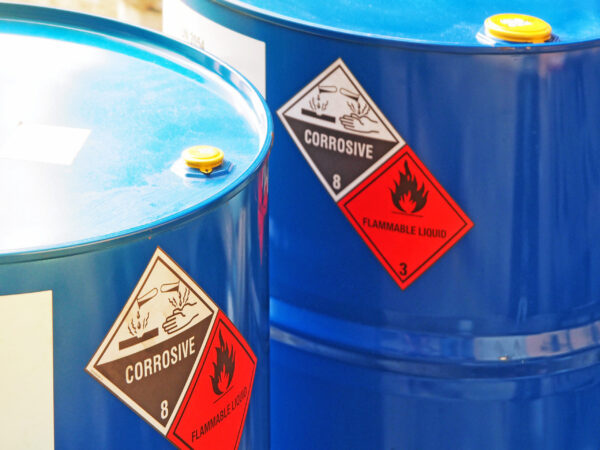The Texas Commission on Environmental Quality (TCEQ) recently approved adoption of the US EPA 40 CFR Part 261 and 262 changes to the Hazardous Waste Generator rules resulting from receipt of public comments and EPA review of the existing rule. Over 60 changes to the rule were made to:
- Reorganize the regulation to make it more user-friendly and foster improved compliance.
- Provide greater flexibility for generators of hazardous waste to manage their wastes in a more cost-effective manner for episodic waste generation.
- Strengthen environmental protection by addressing gaps in the regulation.
- Clarify previously ambiguous components of the rule.
For Texas to maintain its approved jurisdictional status to administer the federal hazardous waste regulations in Texas, adoption of the more stringent changes in the rule is required. Adoption of the less stringent changes is optional for the state. The more stringent provisions include new re-notification requirements for Small Quantity Generators (SQGs), labeling requirements and inclusion of a new Quick Reference Guide in Hazardous Waste Contingency Plans. Less stringent provisions include the episodic waste generation rules and ability for Very Small Quantity Generators (VSQGs) to consolidate their wastes at a Large Quantity Generator (LQG) site under common control. Texas is proposing to adopt the less stringent episodic waste generation changes and the VSQG consolidation provisions.
The changes to the hazardous waste generator rule will be incorporated into existing Texas law under 30 Texas Administrative Code (TAC) Chapter 335 – Industrial Solid Waste and Municipal Hazardous Waste. The proposed rule changes were published in July in the Texas Register for public comment. The comment period ended on August 30, 2021. The TCEQ will now consider any comments received before finalizing the rule change with an expected adoption date of January 2022.
Hazardous waste determinations (new §262.11)
Revisions were made to 40 CFR §261 and 262 in several areas, such as Hazardous Waste Determinations in the updated§262.11 that provided clarification that waste determinations must be accurate. The changes confirm when a hazardous waste determination must be made, reiterates what waste determination records must be kept, and elaborates on how to determine if a solid waste is a listed or characteristic waste. Additionally, the rule now requires labeling of Resource Conservation and Recovery Act waste codes on containers prior to shipment off-site.
Hazardous waste counting (new §262.13)
Revisions in this section state generators must determine their generator category based on waste generated in a calendar month, and their category can change from month to month. The changes clarify the process for determining generator category and provide procedures for determining generator category for facilities that generate acute hazardous waste, non-acute hazardous waste, and residue clean up wastes.
Mixing of hazardous and non-hazardous waste (new §261.5)
Under new §261.5, different requirements for very small quantity generators (VSQGs) are provided and clarification for when mixed wastes count towards generator category for a month.
Marking and Labeling (new §262.32)
This updated section states containers and tank labels must have the words “Hazardous Waste” and the hazards of the contents listed. However, flexibility is provided for in how labeling is accomplished (DOT, OSHA, NFPA, etc.). Affected areas include satellite and central accumulation areas, transfer facilities and TSDF container and tank storage areas.
Episodic Generation (new Subpart L §262.230-233)
One of the new less stringent provisions, now found in new Subpart L at §262.230-233, allows generators to temporarily change their generator category as a result of a planned or unplanned episodic event. One planned episodic event is allowed annually, with ability to petition for a second, unplanned event. Episodic events can last 60 days, with the first day of the episodic event being the first day of waste generation. For unplanned events, this can be the first day of a storm, spill, or other unexpected event, and all wastes must be shipped offsite by the end of 60 days or it will count towards the generator’s category. Prior notification is required for planned events (or post notification for unplanned events).
Waste Consolidation (new §262.10)
Changes under new§262.10 allow for consolidation of hazardous wastes from VSQGs at LQG sites under common control. No hazardous waste manifest is required for the VSQGs transporting wastes, and they do not need to use hazardous waste transporters. Receiving LQGs must notify that they are participating in a consolidation activity and report consolidated wastes with new waste codes on biennial reports. There are no quantity limits for transportation, but VSQGs need to maintain their generator status.
Satellite Accumulation Areas (SAAs under new §262.15)
This rule clarifies that “3 days” means 3 consecutive days for determining when wastes need to move from an SAA. Hazardous wastes cannot be mixed or placed in a container with other incompatible hazardous wastes. All containers can remain open only temporarily when necessary. In addition, the rule provides a maximum weight limit of 1 kg in addition to a 1-quart volume limit for storage of acute hazardous wastes in SAAs. Additionally, reactive hazardous waste can no longer be stored in SAAs.
Please visit this link for more information and specifics on what changes will occur in 30 TAC Chapter 335.
For assistance with regulatory compliance services and hazardous waste, please contact us using the form to the right. Braun Intertec is a full-service firm with the environmental professionals that can help you navigate the complex and ever changing regulatory environment.
